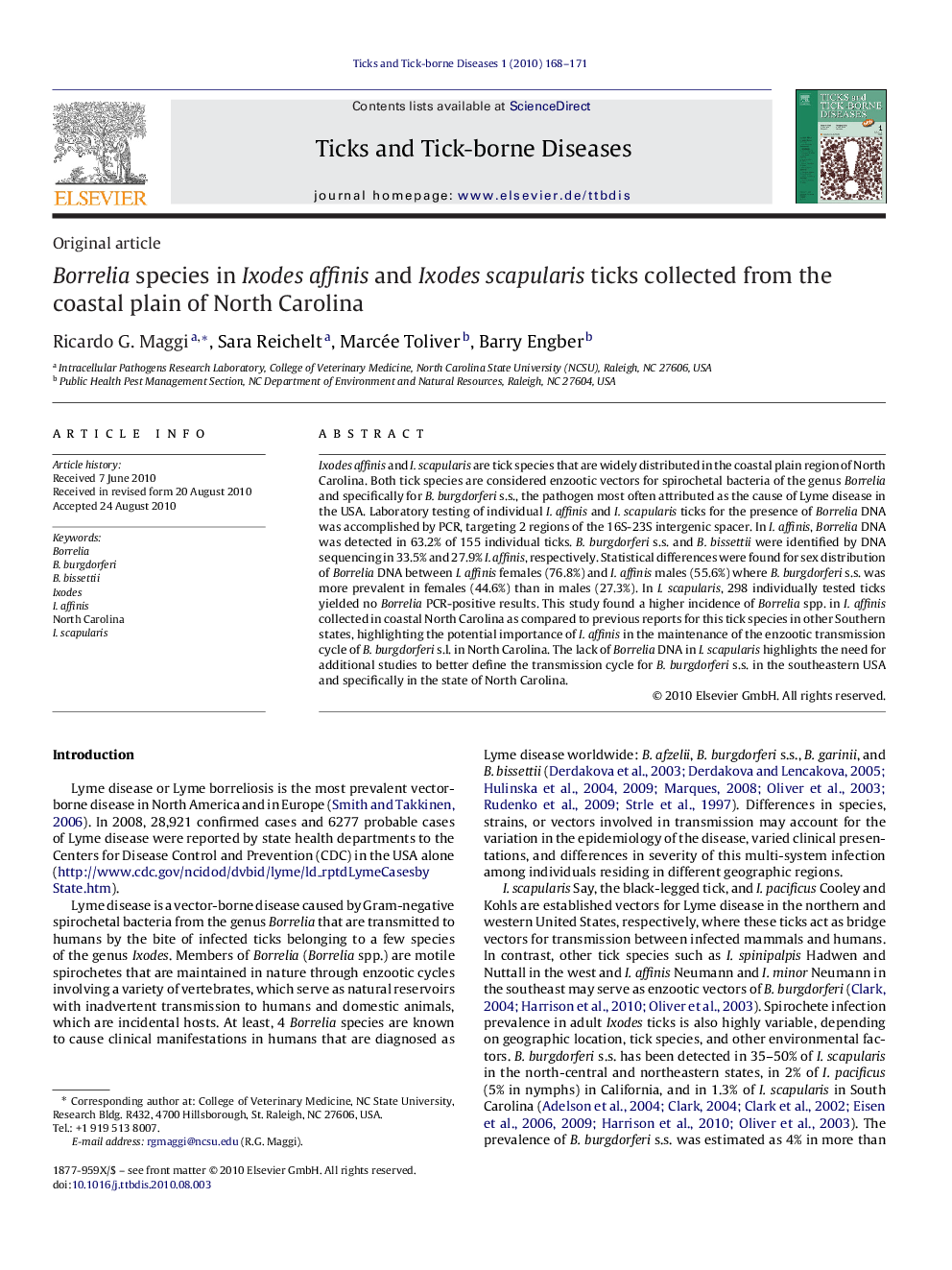| Article ID | Journal | Published Year | Pages | File Type |
|---|---|---|---|---|
| 2474309 | Ticks and Tick-borne Diseases | 2010 | 4 Pages |
Ixodes affinis and I. scapularis are tick species that are widely distributed in the coastal plain region of North Carolina. Both tick species are considered enzootic vectors for spirochetal bacteria of the genus Borrelia and specifically for B. burgdorferi s.s., the pathogen most often attributed as the cause of Lyme disease in the USA. Laboratory testing of individual I. affinis and I. scapularis ticks for the presence of Borrelia DNA was accomplished by PCR, targeting 2 regions of the 16S-23S intergenic spacer. In I. affinis, Borrelia DNA was detected in 63.2% of 155 individual ticks. B. burgdorferi s.s. and B. bissettii were identified by DNA sequencing in 33.5% and 27.9% I. affinis, respectively. Statistical differences were found for sex distribution of Borrelia DNA between I. affinis females (76.8%) and I. affinis males (55.6%) where B. burgdorferi s.s. was more prevalent in females (44.6%) than in males (27.3%). In I. scapularis, 298 individually tested ticks yielded no Borrelia PCR-positive results. This study found a higher incidence of Borrelia spp. in I. affinis collected in coastal North Carolina as compared to previous reports for this tick species in other Southern states, highlighting the potential importance of I. affinis in the maintenance of the enzootic transmission cycle of B. burgdorferi s.l. in North Carolina. The lack of Borrelia DNA in I. scapularis highlights the need for additional studies to better define the transmission cycle for B. burgdorferi s.s. in the southeastern USA and specifically in the state of North Carolina.
